
Steve Albini
The controversial ‘Godfather of Grunge’ spills the beans on his role as engineer, and his working methods. Paul Tingen picks up a few pearls of wisdom along the way.
The big cliché about Steve Albini is that he has a reputation that precedes him. The man is regularly described in the press as “controversial” and “difficult”. He has against-the-grain opinions on studio technology and on the role of the producer, and he’s pigeon-holed as ‘the Godfather of Grunge,’ the champion of heavily distorted, in-your-face, alternative rock.
I’ve interviewed Albini twice before, and contrary to expectations, the American was both times easy-going and forthcoming. Not a whiff of a ‘difficult’ personality. The same was the case with the interview from which this article was culled, which was arranged and executed without a glitch. With the ‘difficult’ rumours unsubstantiated, Albini also dispelled many of the other myths about him over the course of our two-hour phone conversation.
Take, for instance, the received wisdom that Albini mainly works with hard-hitting grunge bands, and imposes his own compressed-to-death sound on records. This perception is perhaps unsurprising, since Albini’s most famous credits incorporate Nirvana, PJ Harvey, The Pixies, Bush, and Jimmy Page & Robert Plant. Moreover, the Chicagoan has been a guitarist in cult 1980s post-punk bands Big Black and Rapeman, while he’s today part of the grunge band Shellac.
“I’ve recorded 1500–2000 records, and I know they’re all quite different,” protested Albini. “I’ve recorded acoustic albums hundreds of times, with acoustic guitars or strings, and so on. I can name hundreds of bands that I’ve recorded that have a completely different aesthetic than grunge. And I don’t impose my taste on the bands I record. To me it’s ridiculous to say that my records have a ‘sound’. I can understand why someone who has only heard three or four records I’ve worked on that are stylistically similar can make such a statement, but I think it is wrong.”
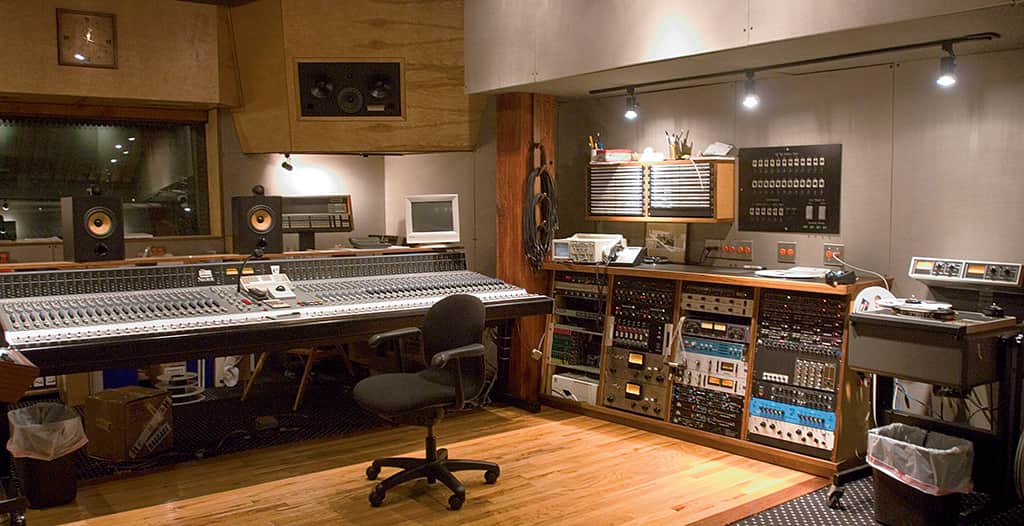
WHO YOU GONNA CALL?
The grounds for Albini’s denial run deeper than aesthetic or engineering considerations. Not imposing his own sound on other people’s recordings is, before anything, a political issue for him. For perhaps the only stigma attached to him that is correct is that he has striking viewpoints on the roles of the engineer and producer in particular. Some of his opinions and working methods are so diametrically opposed to what’s common in the mainstream that they’re shocking and almost unbelievable.
He’s averse, for instance, to the idea of a record producer, and thinks that taking royalties is “an insult to the band”. Albini insists on defining himself as an engineer and sees the essence of his work as purely technical, rather than artistic. For this reason he will work with anyone who calls, regardless of musical style or ability. Stronger still, he would rather not see his name appear on record sleeves.
To say that these opinions are “controversial” and open up several cans of worms would be, well, about right. “I think that my name appearing on people’s records is a little bit of a distraction,” commented Albini. “I don’t think it’s important, and in some ways it causes public relations problems for the band, who then have to defend me or defend their choice of working with me. I understand that people want to give credit, and that’s fine. I’m not offended by it. But once I’m paid, I don’t really need anything more.
“The cases where I’m credited as a producer are the result of someone at the record company writing that on the back of a record. I don’t personally try to exert any influence on my credit. Whatever the band and the record company do with the packaging is their business. But from a position of accuracy, I don’t really do anything that a producer does. A producer is someone who is completely responsible for a session, but in my case those decisions are made by the band, so I don’t qualify as a producer in that sense. Ultimately what I’m trying to do is satisfy the band. Most of the time what they want is for me to record their organic sound, so that’s what I’m trying to provide. If I’m asked to do something fantastic, then I will try to do something fantastic, but I don’t start from a position that everything needs to be changed from what it was.”
Albini’s exhortations may sound almost naively utopian to some, but the man appears to walk his talk. The sessions for Nirvana’s In Utero provide the most famous illustration, because Albini refused the offer of a royalty percentage, at the time (1993) estimated to be worth about $500,000, and instead proposed a flat fee of $100,000. These days Albini doesn’t only turn down royalty fees, he’s also prepared to forego his $450 daily fee (already peanuts in comparison with other ‘name’ producers and engineers) if a band says they can’t afford it. So how does he survive?
“Well, most of the time I do get paid,” laughed Albini, “but on occasion I do a record as a favour for a friend of mine, or a band runs out of money halfway through the sessions and either I leave the record unfinished, or finish and not get paid. And I prefer to finish the record. Basically, anyone who calls on the phone I’m willing to work with. If someone rings because he wants to make a record, I say yes. I’m sure that some people call me because I’m relatively very inexpensive but I’m perfectly comfortable with that. I’m happy to be a bargain.”
I don’t understand where the impulse comes from to make a record that doesn’t have any relationship to the sound of the real band. That seems crazy to me
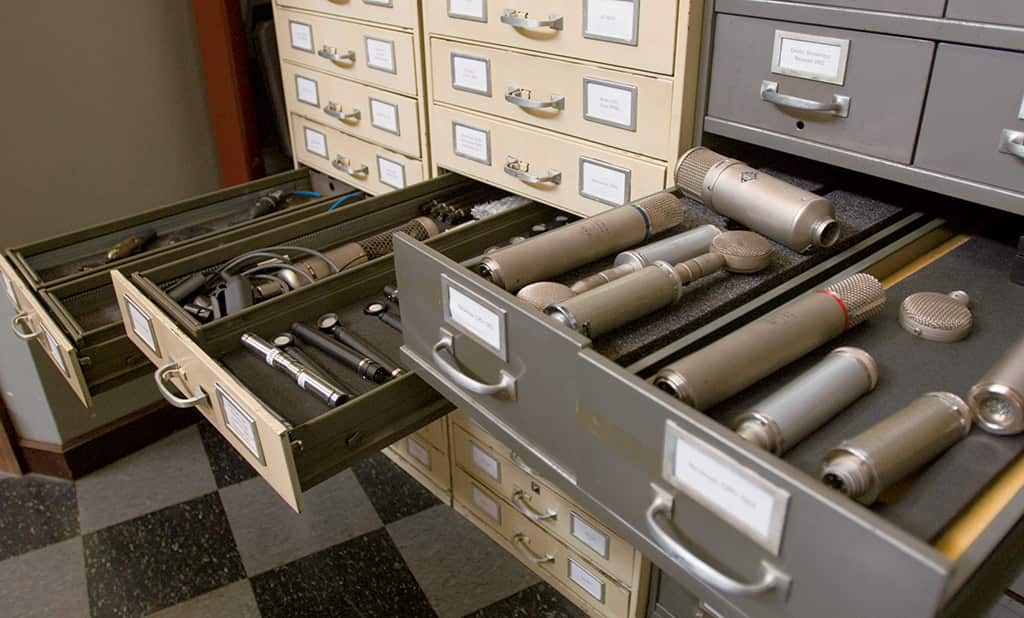
SNAP YOUR FINGERS
Before readers call their travel agencies to inquire about the prices for a round-trip to Chicago, they might want to consider Albini’s working methods. He explained that he was very influenced by John Loder, “the engineer and producer who ran Southern Studios and Southern Records in London, and recorded a lot of the early punk rock singles that were really important to me. They also appeared on the Small Wonder label and Crass Records, and Rough Trade, and so on. Those English labels had very distinctive sounding records, and they were done cheaply and quickly in a small studio, and that really appealed to me.
“When I was in Big Black we did a session with him, and I thought he was a terrific engineer. He showed me the potential for getting the most out of the equipment without making the equipment the focus of attention. He knew how to do things quickly and with great sensitivity to the band, and had a complete working knowledge of his equipment. In any situation he could snap his fingers and do the right thing, because he knew exactly how things worked and what to do.
“Working in the computer paradigm is much slower, because no-one knows their computer software well enough to be aware of every single thing it does. In the analogue domain you know what you’re supposed to do, you plug something in, and it’s done. Problems are solved instantly. In the digital domain you have to try lots of options and see if any of them work, and then you pray that your computer will follow your instructions and won’t crash and that you don’t need to re-start or re-install something.”
Many aspects of Albini’s current attitudinal, aesthetic and technical studio preferences spring from this monologue. For starters, there’s the emphasis on the needs of the band and on working quickly. Albini related that he spends on average “four to 10 days recording an album, including mixing. Two weeks would be an extraordinarily long time for me. Most of the bands that I work with don’t have any spare money, so they have to work quickly to get the record finished.”
The American also paid homage to engineer Iain Burgess, from whom he learned to avoid 1970s approaches like excessive overdubbing and processing, click-track recording, and trying to keep the sound as dead as possible, and instead to focus on recording a band live in the studio, as naturally as possible. All this led to Albini’s current emphasis on the front-end of recording – microphones, mic placement, mic preamps (see box items) – and his love of analogue recording equipment.
“Anyone who’s made records for more than a very short period,” commented Albini, “will recognise that trying to manipulate a sound after it has been recorded is never as effective as when it’s recorded correctly in the first place. Unfortunately almost all the recording software in digital recording is designed to manipulate sound, rather than record it, and so most digital sessions are primarily about manipulating sound, rather than recording sound.”
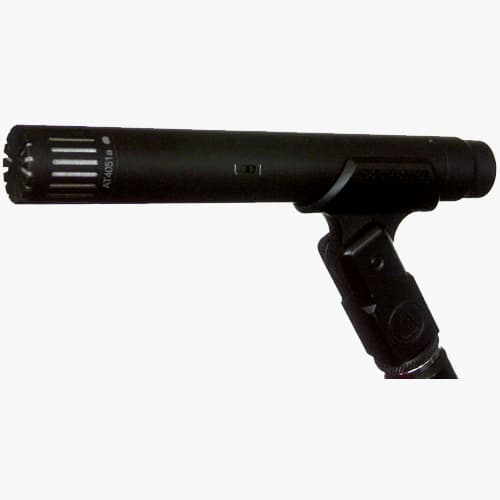
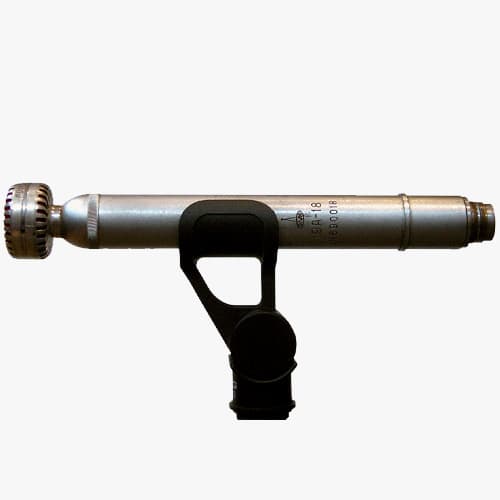
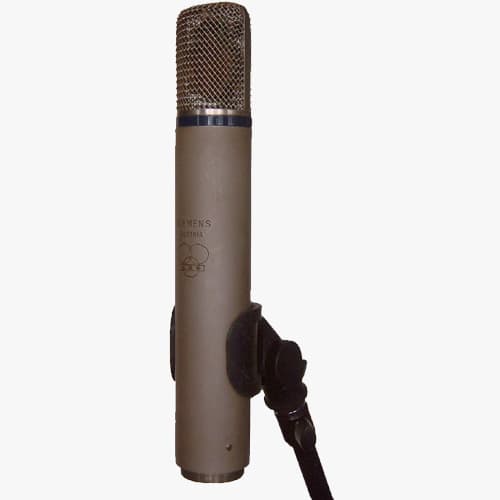
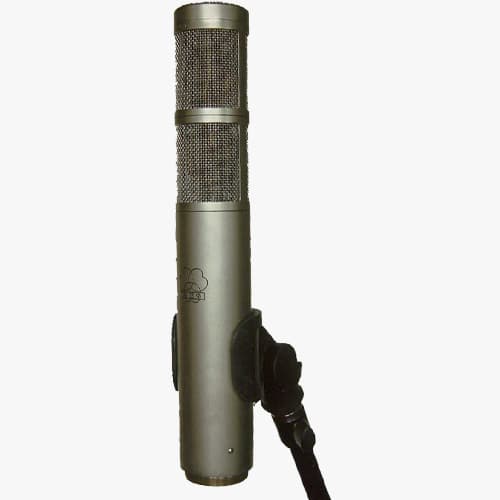
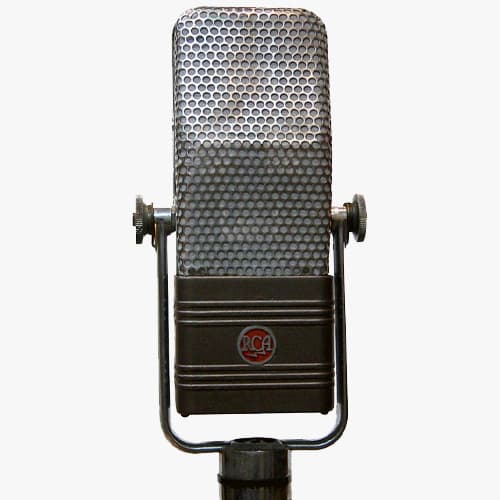

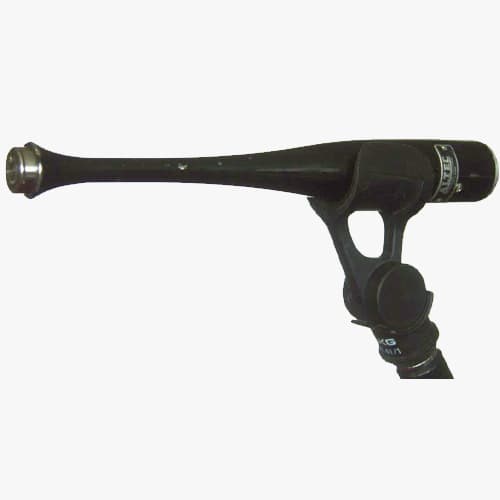

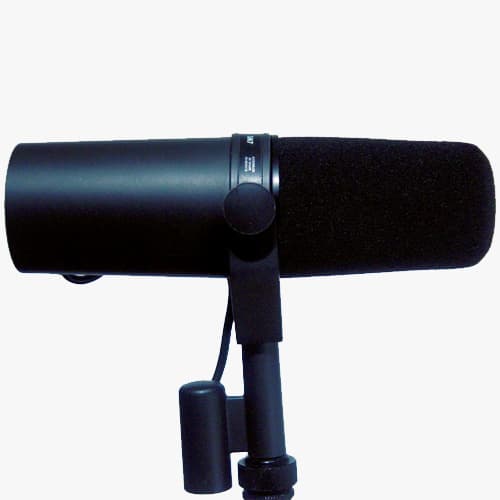


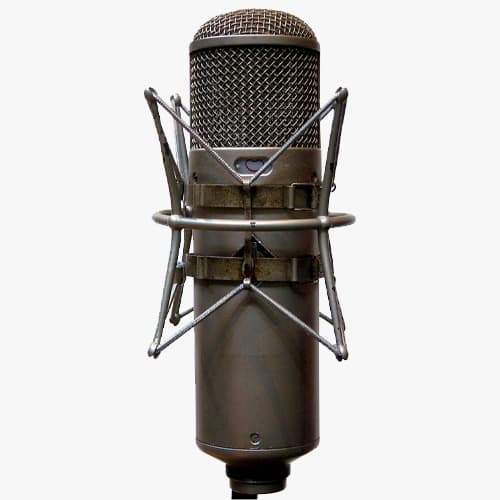
NOT OFFENSIVE
Albini’s recording preferences come together in his Chicago studio, Electrical Audio, a place where he also lives (“I don’t have to drive anywhere”). Electrical Audio opened its doors in 1997, and its live recording areas are set up to cater for every acoustic eventuality. There are two dead recording rooms, two sizeable live rooms with high ceilings, and a huge third, 1200sqft, live room with oak floors and adobe walls.
“Adobe,” explained Albini, “is unfired earth brick. It’s very heavy but also very soft, so it’s very good for acoustic isolation and high frequency diffusion. Most studios have made compromises in their acoustic environments, building recording spaces that are neither very live, nor very dead, and I feel that they’re inappropriate in every situation. We’ve tried to create rooms that offer a range of big contrasts in their acoustics.”
The studio also has two control rooms, each featuring a Neotek desk, the 96-input Elite and the 36-channel Series II, made locally in Chicago. But scrutinising Electrical Audio’s equipment list further (aside from the Flying Faders automation on the Elite), perhaps the most striking aspect is the complete absence of computers and the very limited amount of digital boxes, even in the outboard gear department. Electrical Audio must now be one of the few studios in the world today that’s a computer-recording-free environment. Instead, pride of place goes to a number of analogue tape recorders, among them the Studer A820 16/24-track, a MCI JH16 eight-track, and Studer A820 and Ampex ATR102 two-tracks, which are “all refurbished, so effectively as new”.
CRAZY
Clearly, Electric Audio is an unusual recording environment rooted in an unusual philosophy. So what, exactly, happens there after a band arrives? “When the band arrives at the studio,” declared Albini, “I have a conversation to find out how they want to make their record, what sort of sounds they want, how fast they want to work, who is in charge in the band, and then we get started. I’ll have everyone playing in the same room or spread them out over different rooms, as required. The important thing is that there is a clear line of sight for everyone. That’s more important than whether they are physically in the same room.”
“I prefer to record as much of the band in one live take as possible. If you do it any other way, the band is forced into an unnatural situation from the very beginning of the process. They play together in the rehearsal room and on stage, so it seems normal to me that they also play together when they come into the studio. With 90 percent of the records I do, the singing is recorded after the band, unless the singing is what leads the band. With folk-type records the singing often has to be done at the same time, otherwise it doesn’t sound right.”
Albini has gone on record as saying that recording a band is purely a technical issue, in the sense that he’s doing little more than documenting what’s happening as faithfully as possible. “I would be very happy if my fingerprints weren’t visible,” he said seven years ago. In this sense his approach to engineering can be likened to realistic photography, whereas records on which a lot of manipulation and processing is used – that employ, in Eno-speak, the recording studio as a creative tool – are more akin to painting.
“My job as an engineer is to make sure that the sound coming out of the speakers satisfies the band. And even at his most extreme, Brian Eno didn’t manipulate records as much as any sophomore in college does these days the moment he gets a ProTools rig. The manipulation capabilities of the digital editing programs are now so elaborate that sonic manipulation has become a cliché. I don’t see the studio, as a laboratory, as more important than the band as a performing unit. Anyone can do whatever he wants in the studio – I would never say, ‘no, you’re not allowed to do this.’ But in the same way that not every movie should look like Star Wars, I don’t think every record should be manipulated to the extent that they often are. I don’t understand where the impulse comes from to make a record that doesn’t have any relationship to the sound of the real band. That seems crazy to me.”
But what if, for instance, in his opinion, an arrangement of a song doesn’t work? Surely, many bands come to him because of his reputation and would therefore want him to comment or improve on what they’re doing? “It’s none of my business,” replied Albini. “If the band has decided to do something, it’s their record. I think it’s rude for an engineer or producer to say, ‘you guys are wrong about your own music’. I think that’s almost unforgivable. It’s like saying, ‘Here, let me show you how to make love to your wife. You’re doing it all wrong’. It just seems crazy.”

WILD DYNAMICS
Although Albini is willing to do something “fantastic” when required, it doesn’t come as a surprise that he’s reluctant to apply many effects at any stage of the recording, whether recording or mixing. He takes issue with those engineers and producers who like to fix it in the mix, and even with respected studio forces like producer Daniel Lanois, who has described the mix as a performance. “I think that’s a very egotistical statement,” opined Albini. “I don’t subscribe to the idea that you make a record during the mixing stage. That’s putting too much emphasis on it.
“99 percent of mixing is the balance. If you can hear what everyone is doing, and it all sounds flattering, then you can’t really make any mistakes. In most cases there’s a natural stereo balance that you try to duplicate. Panning is part of that balance. I’m not a fan of dynamically panning things, with things moving about. I tend to present things from the perspective of the musician: if you’re sitting at the drums, then the hi-hat is at the left and the floor tom on the right, if you’re right-handed.”
Given the omnipresence of compression on today’s recordings, particularly in grunge rock, the style of music from which Albini takes his aesthetic inspiration, perhaps the most surprising debunking of all the myths surrounding him came when he explained that he doesn’t actually like compression very much. “I’m not a fan of the sound of compression and I try to avoid it,” stressed Albini. “I’ve used stereo bus compression on one of the hundreds records I’ve made, and that was an experiment and I learned what I needed from that. There will occasionally be compression on individual instruments in the mix, but not often. I don’t normally try to get rid of wild dynamics. I try to incorporate them. If it sounds good, it sounds good; if it doesn’t, it doesn’t. When I can hear compression working I’m kind of irritated by it. It bothers me because it seems like I’m hearing this machine rather than the band.”
NO ARTIFICIAL COLOURING
Albini didn’t change his tune much with regards to other effects, stating: “occasionally I’ll use some EQ during the mixing, because you can have overlapping sounds that cause interference problems, and so you use EQ to open up the sound a little bit. I may use a gentle passive shelf equaliser rather than a resonant band-pass equaliser on the stereo bus, or on a stereo submix, if I need to brighten up the drum overhead microphones, or if I have a vocal that needs a little bit of brightening. I also sometimes put the NTI EQ3 or GML 8200 across the stereo bus.
“With regards to reverbs, we have the best in the world. We have a really nice, beautiful-sounding old plate reverb, the Echoplate, and we have a spring reverb tower, the AKG BX20, which in its day was the bee’s knees for long reverbs. It was a $5000 – $10,000 device when it was made, in the late ’60s/early ’70s. It’s about six-feet tall and has two spiral reverb springs and it sounds lovely. We also have the Quantec XRS XL, which for my money is the best digital reverb ever, and with the Klark Teknik DN780 and the Lexicons PCM70, PCM80, and PrimeTime, we have all the necessary options for reverb.
“Nevertheless, I don’t find myself using reverb very often, because I don’t think it’s as necessary as most engineers and producers think it is. They use it almost as an automatic reflex: when a singer starts singing, they put reverb on it. It’s a thing that’s done pro forma a lot of the time. They put it on because they feel they’re supposed to. I’ve never had that response. I’ll wait until someone says: ‘that sounds weird,’ and then I’ll try reverb. And if you do need reverb, it’s great to have really nice ones available and not to have to make do with lots of artificial crap.”
Albini lays down the final mixes at Electrical Audio on ½-inch analogue tape, mostly using the Ampex ATR102. He’s happy to make CD listening copies for the band, but insists on analogue mixdown because he reckons that the problems with the durability of digital storage media are as unresolved as ever. But with all the recent upheavals in analogue tape production, doesn’t he worry about the longevity of the analogue medium? “I don’t think that digital tape will be manufactured for much longer,” reckoned Albini, “but analogue tape is manufactured again as we speak.”
Indeed, after being shut down because of bankruptcy at the end of 2004, Quantegy has recently been taken over by a company called Discount Tape and is back in production. Albini also pointed to the British company Zonal, that used to supply the BBC, and apparently plans to produce two-inch and ½-inch tape again, to a “Dutch company” that has bought a former Philips cassette tape plant and the rights to Agfa and Mtech tape, and to ATR Services in Pennsylvania. The latter intends to begin manufacturing analogue tape later this year under the name ATR Magnetics. But the latest word from Holland is that with Quantegy back in the market, the PDM company has for now suspended plans to enter the professional tape market.
Albini is unconcerned by all this uncertainty. “To be honest, I saw it coming, and we built up a huge stockpile of analogue tape here.” In more ways than one, Albini remains ahead of the game.
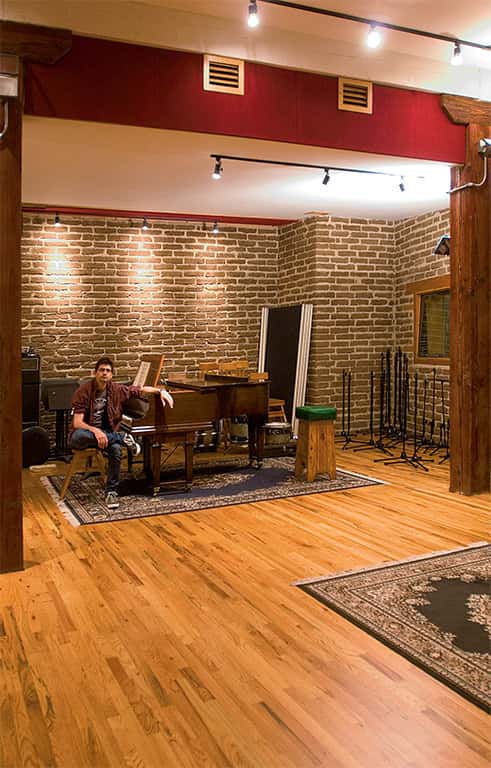


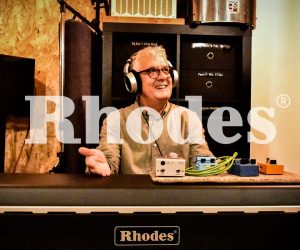
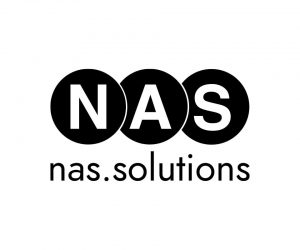












RESPONSES